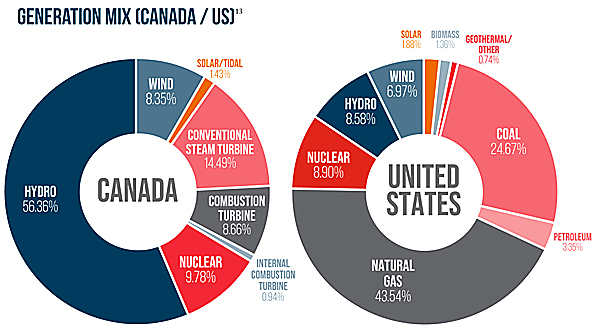Toronto: The Canadian Electricity Association (CEA) emphasized the need for resilience in the electricity sector in its inaugural State of the Canadian Electricity Industry, released February 28.
“The State of the Electricity Industry in Canada is strong, but is entering a period of revolutionary change that will require significant investment,” said Francis Bradley, Chief Operating Officer (COO) of CEA. “To help meet this change there are a number of regulatory and competitiveness issues that should be addressed.”
 The report focuses on building resiliency measures through investment in infrastructure, climate change adaptation and by strengthening North American partnerships. It focused on six policy areas including competitiveness, investment and regulatory environments, infrastructure renewal and innovation, environmental sustainability and compliance, electrification, cybersecurity and the Canada – U.S. electricity relationship.
The report focuses on building resiliency measures through investment in infrastructure, climate change adaptation and by strengthening North American partnerships. It focused on six policy areas including competitiveness, investment and regulatory environments, infrastructure renewal and innovation, environmental sustainability and compliance, electrification, cybersecurity and the Canada – U.S. electricity relationship.
The report makes six recommendations:
• Greater regulatory certainty and predictability on key issues including energy policy and climate change;
• Efficient project approval processes and timelines, improved investment conditions including corporate tax reductions;
• Adjustments to territorial debt-caps to allow northern communities access to private capital, direct government investments in transformative infrastructure;
• A clear Canadian strategy on electrification;
• Investment in cyber security and infrastructure; and,
• Enhancement of the United States and Canada trade relationship.
“In 2019, we took a deep dive into the Canadian electricity sector’s regulatory burden, Canada’s competitiveness and the movement towards a low carbon economy,” noted Bradley, “We assessed the investment climate and offer concrete policy asks as the country moves towards electrification. Utilities are feeling the impact of cumulative regulatory burden. Our member companies are doing their part and need the support of government to continue innovating and electrifying.”
The electricity sector has also been central to Canada’s ability to address climate change. More than 80% of power produced in Canada is non-emitting, and the sector has reduced GHG emissions by 30% since 2005 and is on pace to double this by 2020. Electricity is integral to Canada’s clean energy future.
Channa S. Perera, Vice President of Policy Development at CEA added, “The electricity sector is continuing to lead the transition to a low-carbon economy, but it is imperative that governments provide long-term policy certainty that is much needed for large-scale capital investments.”
Even with regulatory hurdles, the electricity industry is moving forward with significant investments in Canada. According to ReNew Canada’s 2019 Top 100 Infrastructure Projects, six of the top ten projects (ranked by capital investment) are directly related to the industry with a total investment of $64.4 billion.
|
Canada’s Top Ten 2019 Infrastructure Projects
|
|||
|
Rank |
Project |
Value, $Billion |
Industry |
|
1 |
Bruce Power Refurbishment |
$13.0 |
Electricity Generation |
|
2 |
Darlington Nuclear Refurbishment |
$12.8 |
Electricity Generation |
|
3 |
Muskrat Falls Project |
$12.7 |
Electricity Generation |
|
4 |
Site C Clean Energy Project |
$10.7 |
Electricity Generation |
|
5 |
Eglinton Crosstown LRT |
$9.1 |
Transportation |
|
6 |
Keeyask Hydroelectric Project |
$8.7 |
Electricity Generation |
|
7 |
Romaine Complex |
$6.5 |
Electricity Generation |
|
8 |
Réseau électrique métropolitain |
$6.3 |
Transportation |
|
9 |
Gordie Howe International Bridge |
$5.7 |
General / Transportation |
|
10 |
Southwest Calgary Ring Road |
$5.0 |
General / Transportation |
|
Source: ReNew Canada, 2019 Top 100 Infrastructure Projects |
|||
